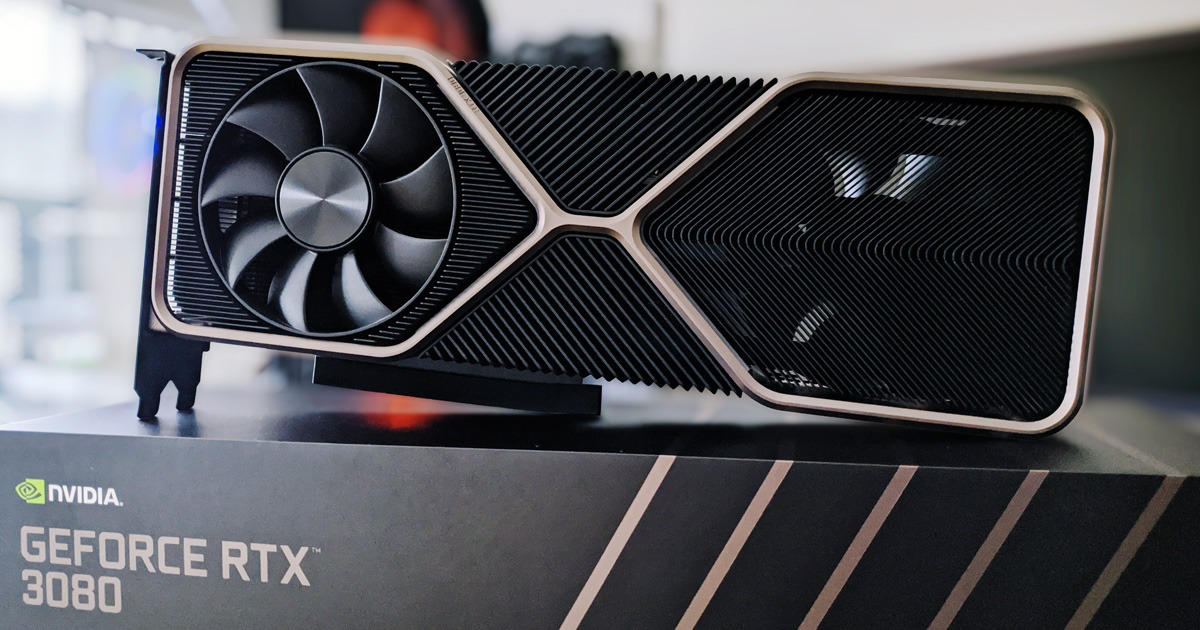
And this is the XMG NEO 17 gaming laptop, which includes an RTX 3080 graphics card, an AMD Ryzen 5000 octa-core processor, NVMe memory, and a 1440p high refresh rate display.
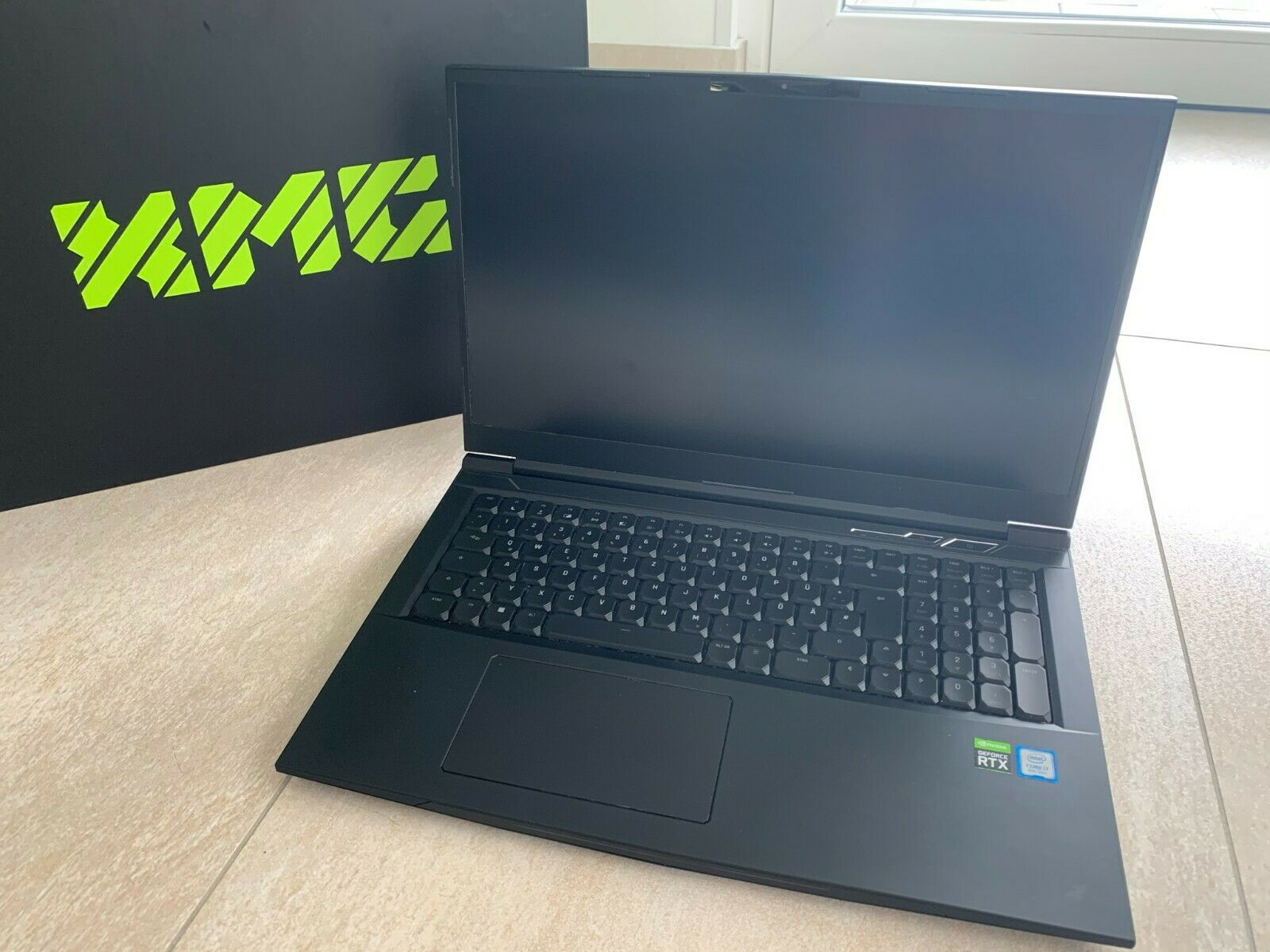
Laptops, like desktops, have their pros and cons, but it's important to note that the RTX 3080 is not the same in either case.
Let's continue looking at the XMG NEO 17. I must say that this is, of course, just a beast among laptops. But we will focus on its graphics card.
First of all, it is worth mentioning that:
- XMG , , , , — , .
- . RTX 3080 NEO 17 . , — . DLSS , . , RTX 3080 — .
Below is the specification table, from which it becomes clear that the laptop version of the RTX 3080 (mobile) actually has much more in common with the desktop RTX 3070: it is based on the same GA104 chip with the same 256-bit memory bus connected to GDDR6 instead of GDDR6X.

It is curious that the laptop RTX 3080 is still more efficient in one aspect than the classic RTX 3070. It has more CUDA cores: 6144 compared to 5888 - so in fact the GA104 is fully involved in it - in contrast, again- the same, from the desktop version. However, you can also notice that the desktop card consumes more power than the mobile one: 220 W versus the maximum 150 W for the mobile RTX 3080.
So can the RTX 3080 for laptops really be called the GeForce RTX 3080?
Everything is complicated here. The RTX 3080 itself is synonymous with best-in-class desktop performance, while the RTX 3080 for laptops is the best in its class. So it might make sense to designate it as the RTX 3080m. Maybe.
In fact, it's even more complicated.
The XMG NEO 17 has a feature called Dynamic Boost. So, if the CPU does not need all the power supplied and can be limited to, say, 135 watts, then an additional 15 watts can be directed to the GPU. Thus, in the tests that we will consider next, the total power will still be 150 watts.

Now let's move on to comparisons.
In this screenshot we have Borderlands 3. We are comparing the RTX 3080 for our XMG NEO 17 laptop with the classic desktop RTX 3080, 3070 and 3060. Remember that the laptop has a Ryzen 5000 installed. The desktop PC has a Core i9 10900K. In principle, it is obvious that here in all systems we have a resolution limitation of 1440p. This is a kind of middle ground for high-performance notebooks with the selected graphics power class.

The end result can be clearly shown as a percentage:
- the desktop RTX 3080 is 51% faster than its mobile counterpart;
- RTX 3070 11,5% , . , , , , , : 220 150 .
- RTX 3060 73% RTX 3080 — , , RTX 3080 37% , RTX 3060 .
If you run Control, you see a very different result and a big difference in performance: on a desktop PC, the RTX 3080 is 62% faster than on a laptop, while the desktop RTX 3070 is 21% faster. At the same time, the laptop still significantly outperforms the RTX 3060, but by only 20%, and not by 37, which we previously saw with the example of Borderlands.
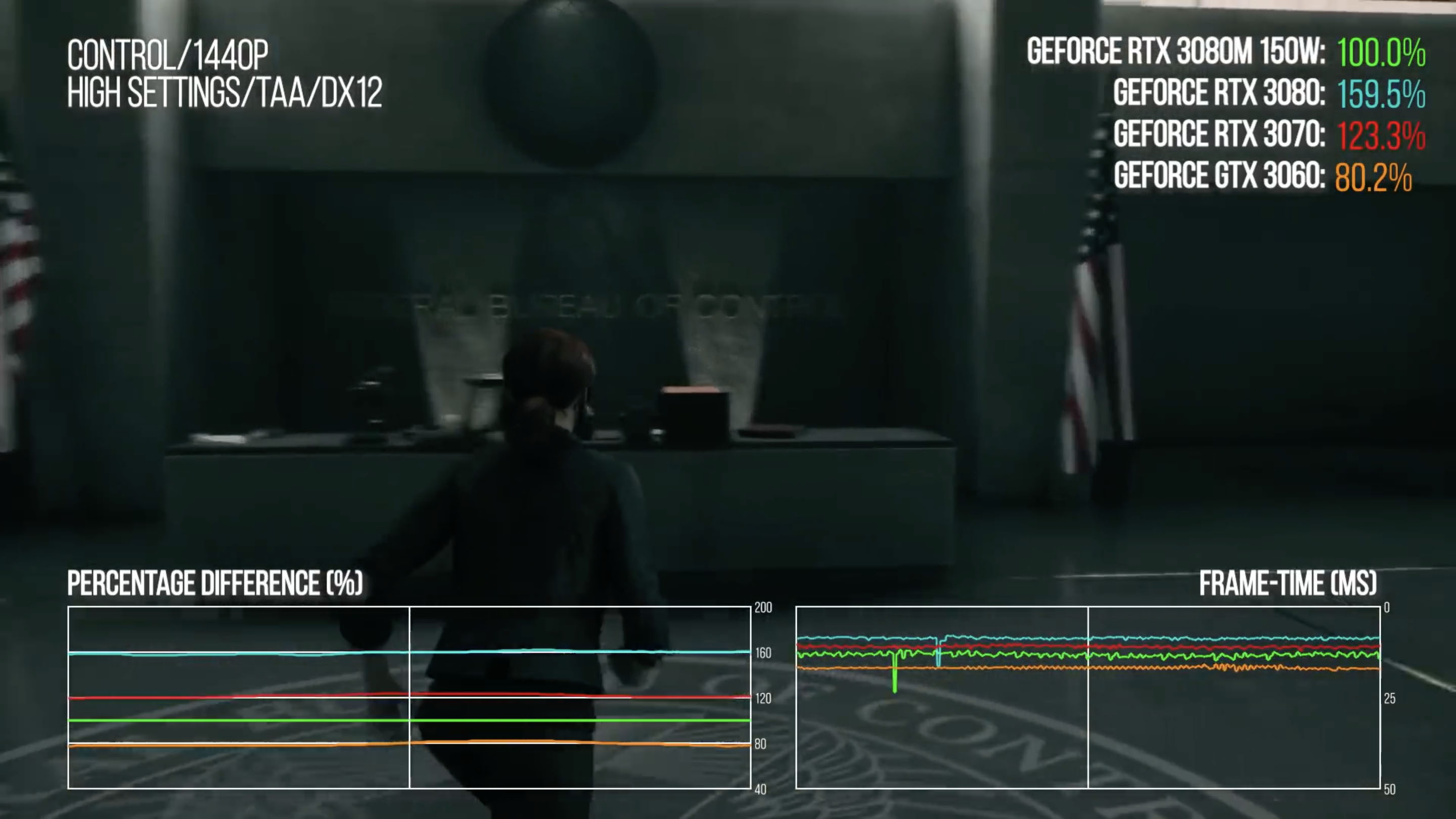
With Death Stranding, the situation changes again: here the desktop RTX 3080 is only 35% faster than the XMG NEO 17, and the RTX 3070 is 20% faster. If you revisit other game titles, then the trend with tangible fluctuations in performance will only continue.
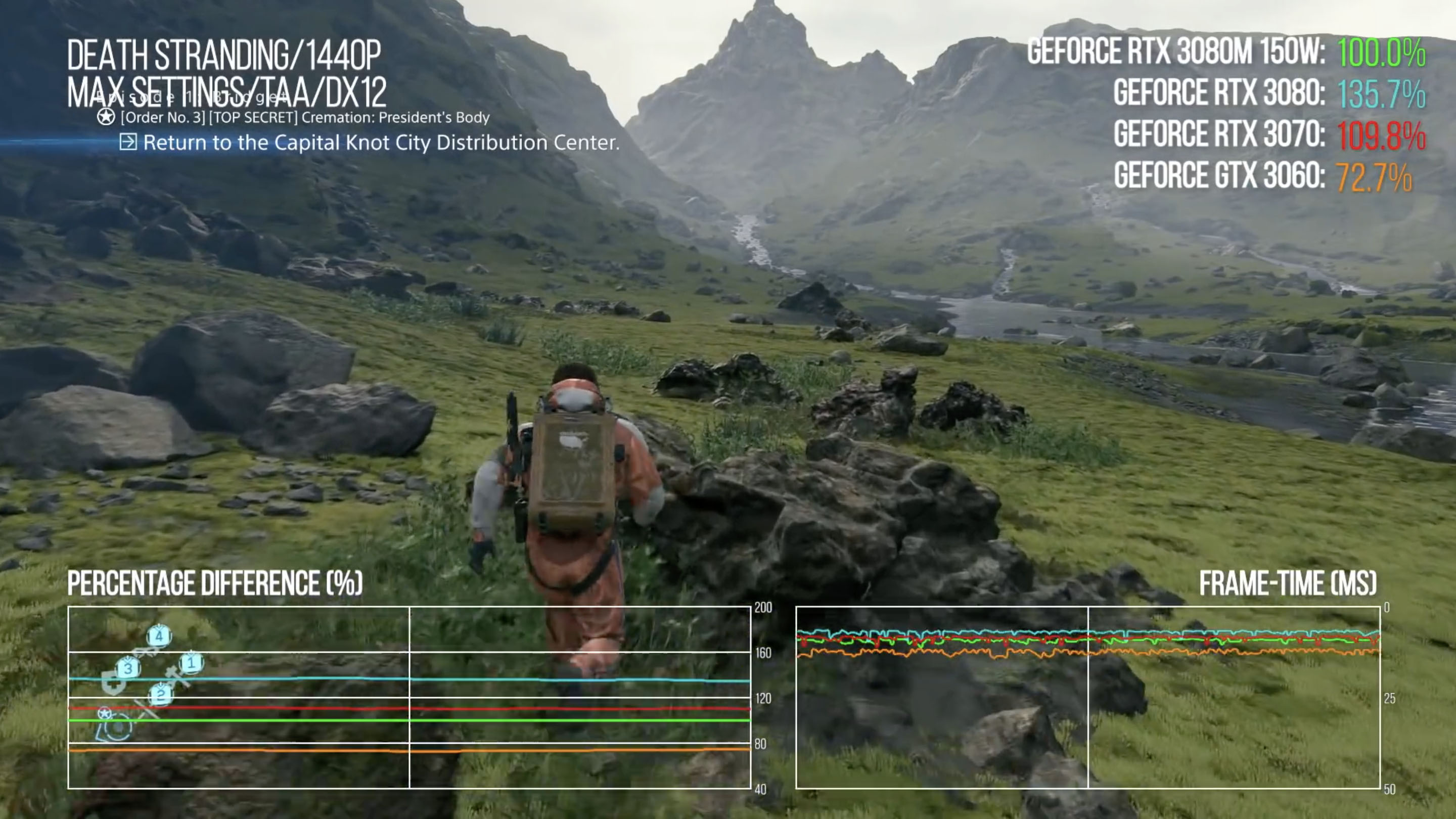
So, the desktop RTX 3080 is 40-60% faster than its laptop equivalent, but it also requires a lot more power.
So can the RTX 3080 for laptops be equated with any particular desktop graphics card?
Let's now take a wider range of NVIDIA graphics cards ranging from RTX 2080 to RTX 3070 and work with them. Going back to Borderlands 3, the mobile RTX 3080 is 1% better than the 3060 Ti and 7% better than the 2080 Super for desktop. For Control, the figures will change to the following: 3060 Ti will outpace the mobile RTX 3080 by about 4%, and 2080 Super - by 3%. As for Shadow of the Tomb Raider, there will also be a slight advantage of these video cards. If you double-check a bunch of other games, the average values will be about the same everywhere.

The mobile RTX 3080 and desktop 3060 Ti both have the same GA104 GPU and memory bandwidth, but differ in the number of CUDA cores: 4864 versus 6144 in a laptop - and power consumption: 200W versus 150W. For example, the 3060 Ti has equivalent or slightly better performance because 25% of the extra power is passed through it.
As mentioned earlier, in XMG NEO 17, you can scale the power and determine how much of it will be given to the GPU. Why is this needed? Simply put, this way you can trade performance for less heat generated. And less heat generation, in turn, affects the fan speed - and therefore the noise level.
There's really no linear relationship between power consumption and performance - it's more of a curve. Below is an example with Metro Exodus, but similar results were obtained with other games. So:
- The three best results are the top ones: 135, 125 and 115 W TGP with dynamic amplification enabled;
- the bottom result is 115 watts without dynamic amplification.
Comparing the top and bottom lines, we can say that 77% of the power consumption level provides 90% of the productivity. Yes, it's slower, but more efficient, easier to call, quieter.

All this is really difficult to explain. When it comes to laptops, the product on offer is more than just performance. We are talking about a form factor, acoustics - about a whole set of parameters.
Take the ASUS ROG Zephyrus G15 for another example. Unlike the bulky, maximum performance XMG, it is thin and light. However, ASUS actually has the same hardware, but only with an 80W TGP. At the same time, it has a turbo mode, which we will also consider.
Example one: Borderlands 3 is doing quite well here, despite the difference in power. Turbo mode on ASUS is generally similar to the lower limit of NEO 17.

In the case of Shadow of the Tomb Raider, the results are more scattered, but do not forget that the power consumption is also different.

So, if the 150-watt mobile RTX 3080 is broadly similar in performance to the desktop 3060, what then?
The Zephyrus G15 graphics card is powered by 80W. Looking at Borderlands 3 here, we can see ASUS outperforms the RTX 3060, and the 95W turbo mode gives RTX 2080 performance.
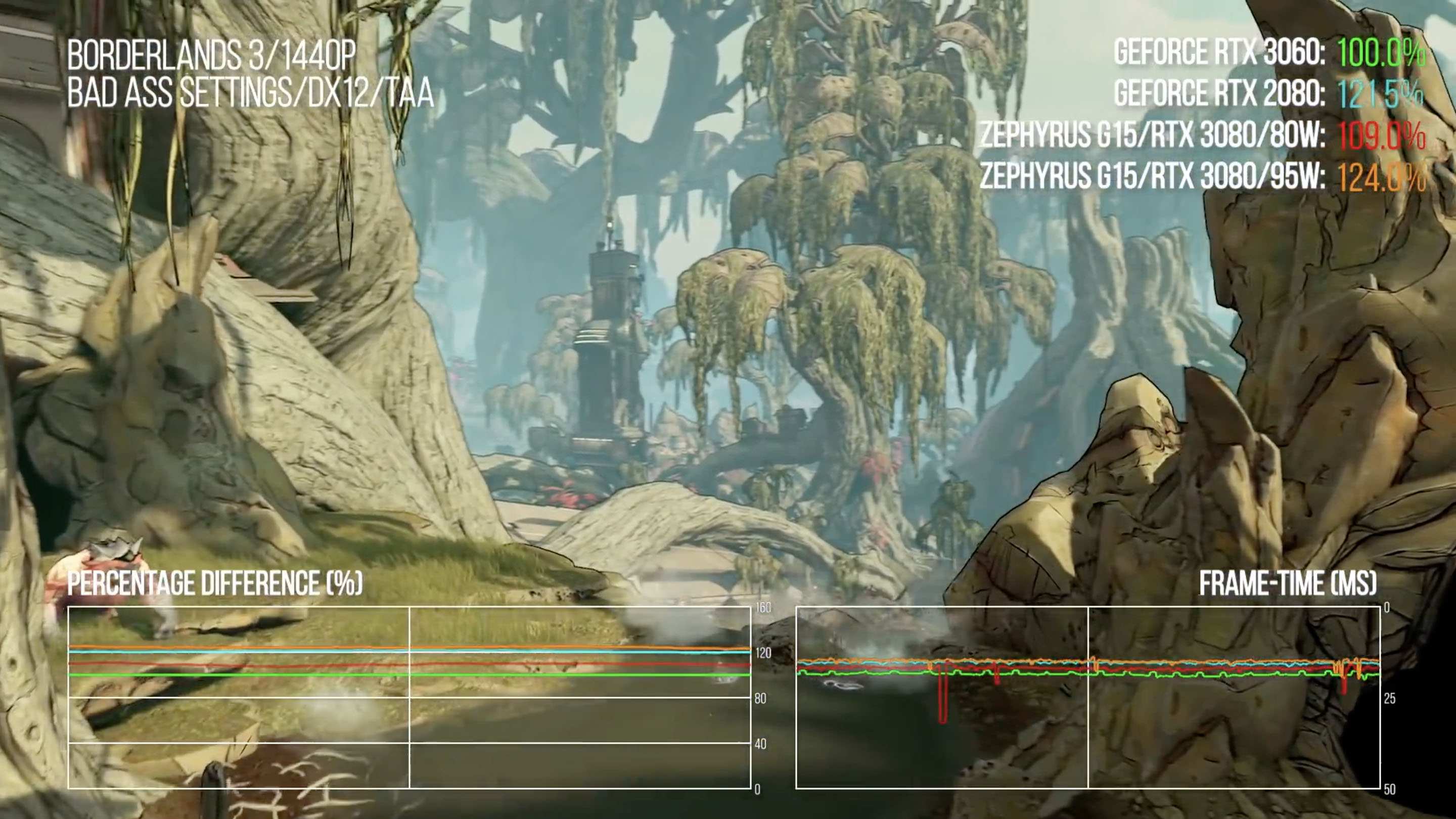
The last example is Shadow of the Tomb Raider. Here, the ASUS Turbo Mode behaves a little more like the 2070 Super - it's the closest desktop equivalent to it.
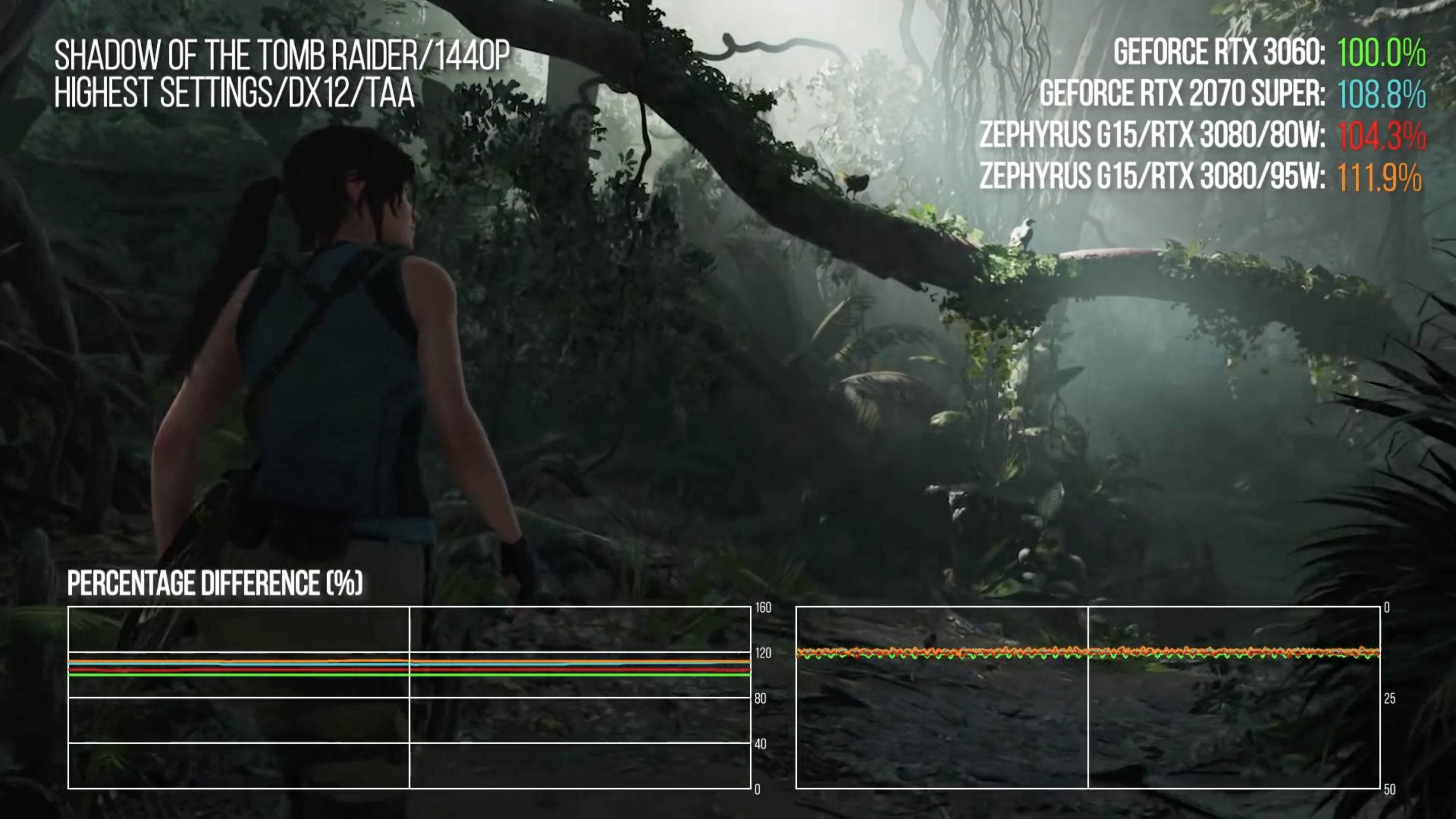
So, we've done a pretty big study showing how one graphics card, called the RTX 3080, is actually not very similar to another RXT 3080, while the latter's performance speaks more about its similarity to the RTX 2080 Super, or 3060 Ti. or 2070 Super, or 3060.
The mobile RTX 3080 should have been called the 3080m in an amicable way, to somehow indicate that it is not the same as its desktop version. Once upon a time, the m designation did take place, but disappeared with the advent of the 10 series, when in fact laptops had the same chips as desktop ones, with about the same performance. But time is ticking, and the return of the m symbol now makes a lot more sense.
However, perhaps it is worth going even further. Perhaps the XMG NEO should ship with the RTX 3080m 150, while the Zephyrus should ship with the RTX 3080m 95. In this case, the naming is even more specific.
The truth is that there are so many variables that can potentially affect performance that it is difficult to capture all of them. But in the end it seems that this confusion can still be at least mitigated.
The desktop RTX 3080 reveals itself best at 4k resolution. This is an interesting clarification in the context of comparison, because all this time we have been talking about 1440p. It turns out that the NEO 17, even at 115W TGP, manages to outperform the desktop RTX 3080 running at 4k. So yes: the RTX 3080 can provide an experience equivalent to the desktop RTX 3080. It may not be the best of the best, but the best of its kind.